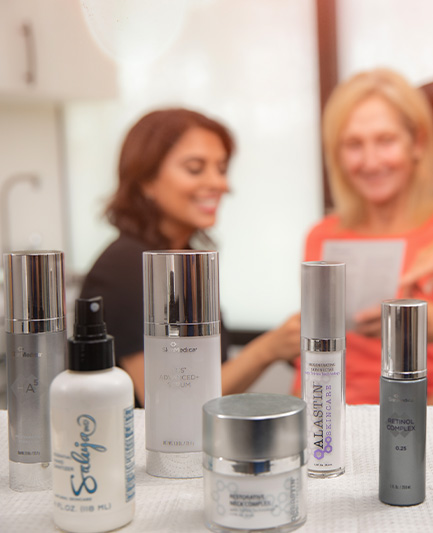SEARCH OUR WEBSITE
If you’re considering breast augmentation, it’s important to understand the difference between saline and silicone implants. There are a lot of different decisions that you’ll make along the way as you plan your breast augmentation, so your plastic surgeon can make sure that you understand your options. In the meantime, here are some key differences between the two main types and how to decide which one is best for you.
What’s the difference between saline and silicone breast implants?
Used in women aged 18 or over, saline implants are essentially made up of a silicone shell and saline (sterile salt water) filling. Your plastic surgeon will insert these empty shells into the breast and then fill them with saline until they reach your desired size. This allows them to be placed with smaller incisions.
Unlike saline implants, silicone implants contain a viscous, jelly-like fluid. Available to women 22 and older, these implants arrive at your surgery pre-filled and ready to insert. Due to their thicker consistency, many women feel that silicone implants look and feel more like natural breast tissue than their saline counterparts.
What are the risks of breast implants?
Like all medical procedures, getting breast implants does carry some risk, including post-surgical infection and breast pain. Some women experience a loss of sensation in their breasts and nipples after getting implants and others have trouble breastfeeding, but this can be temporary or even not at all. There is also a possibility that scar tissue will form as the breasts heal, possibly distorting the shape of the implants. This condition is known as capsular contracture, and it’s a risk of any implant surgery, not just breast augmentation.
Unfortunately, both saline and silicone implants sometimes rupture or leak. It’s usually obvious when saline implants leak or break, as the resulting loss of fluid will cause the breast to deflate or change shape. Your body will safely absorb the saline, however, so the only concern is removing the leftover shell. When silicone implants leak, the silicone gel typically stays within the surrounding breast tissue. The silicone won’t cause any major health concerns if addressed quickly, but you may not even know you have a leak unless you have your implants regularly checked. We recommend breast ultrasound or MRI every three years post silicone implant to monitor for integrity.
Before opting for breast augmentation or reconstruction, it’s important to understand that fixing these potential complications requires additional surgery to remove or replace the implants. Although not common, some types of textured breast implants have been associated with a specific type of cancer known as breast implant-associated anaplastic large cell lymphoma (BIA-ALCL), or breast implant sickness. We no longer offer textured breast implants, and most of these have been removed from the market. We do recommend consulting with your surgeon or a plastic surgeon if you do know you have textured breast implants. BIA-ALCL is not breast cancer, but it comes with some risk to your health.
What factors should I consider before getting breast implants?
Before getting breast implants, understand what they can and can’t achieve. Implants can’t entirely fix sagging breasts, which may require a breast lift. Implants also can’t stop time– even after getting implants, your breasts can change shape as your weight changes or if you become pregnant. Your plastic surgeon can help you figure out the right time for your procedure and can make sure you understand your best options in the meantime.
Schedule a Consultation
The best way to get started on your breast augmentation options is by meeting with Dr. Rebecca Novo to discuss your options for breast implants. To schedule a consultation, we invite you to contact our Melbourne office by calling or filling out our online form. If you live in Brevard County, or the beaches such as Indialantic, Satellite Beach, or Melbourne Beach, we would love to hear from you to discuss your options!
BACK TO ALL BLOGSCONTACT US FOR YOUR Customized Consultation
Fill out the form below or call us at (321) 395-3298 to schedule your custom consultation.

REVEAL YOUR MOST Radiant Skin
Dermatologist Dr. Anita Saluja and plastic surgeon Dr. Rebecca Novo have created an online shop for your convenience. They have curated scientific skin care products that they believe will deliver results: For Your Best Self. And you can always contact our office with any questions.
SHOP OUR SKIN STORE


